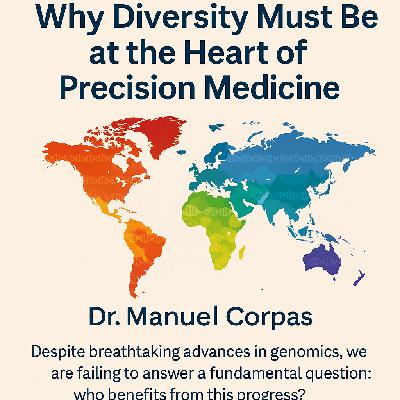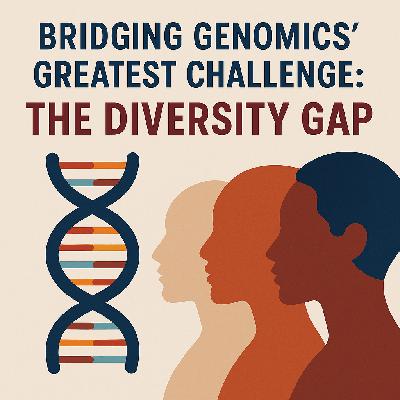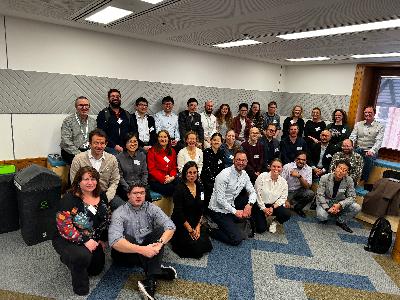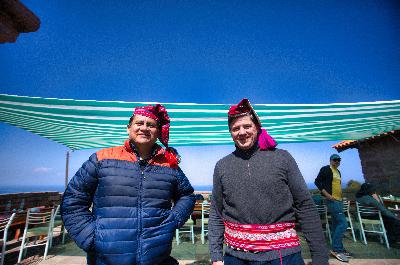The Case for Genomic Representation in Latin America
Description
Genomic research has made tremendous strides over the past decades, paving the way for breakthroughs in precision medicine. However, these advances have not benefited everyone equally. A glaring issue in this field is the systemic underrepresentation of certain populations, particularly indigenous groups from Latin America. In a recent talk at Queen Mary University of London’s PHURI, I had the opportunity to highlight the unique challenges and opportunities in addressing this disparity.
<figure class="wp-block-embed is-type-video is-provider-youtube wp-block-embed-youtube wp-embed-aspect-16-9 wp-has-aspect-ratio">
<figure class="wp-block-audio"></figure>
The Problem of Underrepresentation in Genomics
The global genomic research landscape has been dominated by studies focusing on populations of European ancestry. Leading repositories like PharmGKB—dedicated to gene-drug association data—exemplify this imbalance. While European and, to a lesser extent, Asian populations are reasonably represented, native populations from the Americas account for a minuscule fraction of the data. This disparity leaves indigenous communities underserved and their unique genetic profiles largely unexplored.
A Journey Through Latin America’s Genetic Heritage
To understand why this underrepresentation matters, it’s essential to delve into the historical and geographical context of Latin America.
- Ancient Origins: The ancestors of indigenous populations arrived in the Americas around 23,000 years ago, crossing from East Asia via the Bering Strait. By 12,000 years ago, they had spread across the continent, with distinct groups establishing themselves in the Andes, Amazon, and coastal regions of South America.
- Geographical Influence: Peru’s diverse landscapes—ranging from high-altitude Andes to the Amazon rainforest—have significantly shaped these populations. Today, around 30% of Peru’s population lives at altitudes exceeding 2,500 meters, showcasing adaptations to unique environmental pressures.
- Impact of Colonization: The Spanish conquest in the 16th century had devastating effects, reducing the indigenous population by 90% within 40 years due to diseases like smallpox and tuberculosis. Despite this, regions like Bolivia and Peru still host some of the highest concentrations of native populations.
Discovering Untapped Genetic Diversity
Our research seeks to bridge the gap in genomic representation by focusing on Peru’s indigenous communities. Through the analysis of 150 genomes from seven populations, we uncovered exciting findings:
- Novel Variants: Around 13% of the genetic variants identified were previously unknown, underscoring the vast untapped diversity in these populations.
- Population Structure: Isolated groups such as the Matsés (Amazon rainforest) and Uros (Lake Titicaca) exhibited low genetic diversity, likely due to historical bottlenecks. In contrast, urban populations with European admixture showed greater diversity.
- Unique Mutational Profiles: High-impact mutations—those likely to affect gene function—were identified in certain populations, with many absent from global databases. These findings highlight the potential for groundbreaking discoveries in areas like disease susceptibility and drug response.
A Call for Regional Collaboration
One of the biggest challenges in advancing genomic research in Latin America is the lack of a coordinated framework. Unlike Africa, which has the H3Africa initiative—a Pan-African genomics consortium that secures international funding and fosters local research—Latin America lacks a similar structure. This limits the region’s ability to scale research efforts and fully capture its rich genetic diversity.
What could such an initiative achieve?
- Federation of Data: Integration of genomic data across Latin American countries to enable large-scale studies.
- Capacity Building: Empowering local scientists and researchers with funding and resources.
- Global Comparisons: Creating interoperable systems to compare Latin American data with those from Africa, Oceania, and other underrepresented regions.
The Role of Equitable Partnerships
Collaboration with pharmaceutical companies can play a critical role in achieving these goals. In some regions, such partnerships are structured to ensure mutual benefit: companies gain access to valuable genetic data while investing in local research infrastructure. A similar model could be applied in Latin America, ensuring that profits from drug discoveries benefit the communities contributing their data.
Why Representation Matters
The underrepresentation of indigenous populations in genomic research isn’t just an academic issue—it’s a question of equity and global health. Precision medicine aims to tailor treatments to the genetic makeup of individuals, but this cannot be achieved if vast swathes of humanity are left out of the equation. Indigenous communities in Latin America face unique health challenges, and understanding their genetic profiles could lead to breakthroughs in addressing these needs.
Looking Ahead
The genomic research community is at a pivotal moment. Awareness of the need for diversity in research has grown, creating a window of opportunity to correct historical imbalances. Latin America, with its rich and underexplored genetic heritage, is uniquely positioned to contribute to this effort.
By building a federated, inclusive approach to genomics, we can unlock the potential of indigenous populations—not only for their benefit but for the advancement of global health. The journey ahead is challenging, but the rewards promise to transform our understanding of humanity’s shared genetic legacy.
























